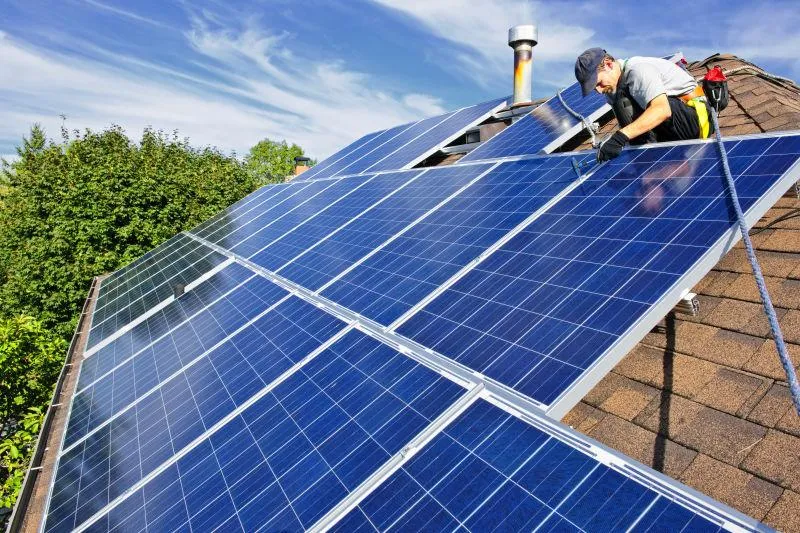Installation Precautions for Bifacial Solar Panels: Maximizing Efficiency and Longevity
Bifacial solar panels, also known as double-sided solar panels, have gained significant popularity due to their ability to capture sunlight from both the front and back sides, increasing overall energy output. However, to fully benefit from this advanced technology, proper installation is crucial. Here are some key installation precautions to ensure you maximize the efficiency and lifespan of your bifacial solar panels.
1. Bifacial Panels,Optimal Tilt and Orientation
Bifacial panels require careful consideration of tilt and orientation to maximize energy generation. Unlike traditional solar panels, bifacial solar panels can capture sunlight from both sides, so the angle at which they are installed can significantly affect performance.
Tilt Angle: Ensure that the tilt angle is optimized for both direct sunlight on the front and reflected sunlight on the back. In many cases, a steeper tilt angle (compared to monofacial panels) can enhance the rear-side energy gain.
Orientation: For ground-mounted systems, consider an east-west orientation to maximize sunlight capture throughout the day. This setup can help balance the energy production between the morning and afternoon.
2. Proper Mounting Height and Spacing for Bifacial panels
The height and spacing of double-sided solar panels play a crucial role in the amount of reflected sunlight they receive. The following factors should be considered:
Elevation from the Ground: Raising the panels higher off the ground allows for more light to reach the back side. Generally, a height of 1 meter or more is recommended to reduce shading and increase ground reflection.
Spacing Between Rows: Adequate spacing between panel rows prevents shading from nearby panels. Calculate the optimal row spacing based on the latitude, tilt angle, and local weather conditions to minimize shading and maximize rear-side illumination.
3. Selecting the Right Ground Surface for Bifacial panels
The ground surface beneath the panels significantly impacts the amount of light reflected onto the back side of bifacial panels.
Reflective Surface: Choose a highly reflective ground surface, such as white gravel, concrete, or a light-colored membrane, to maximize the albedo effect. This helps increase the amount of light that reaches the back side of the panels, boosting energy output.
Minimize Shading Objects: Ensure that there are no tall grass, shrubs, or other objects that could shade the panels or reduce the reflected light.
4. Electrical Considerations and Wiring about Bifacial panels
Proper electrical setup and wiring are crucial for the safe and efficient operation of bifacial solar panels.
Use Compatible Inverters: Ensure that inverters and other electrical components are compatible with the unique characteristics of bifacial panels, such as their higher energy output and potential for variable power generation.
Avoid Cable Shading: Run cables and wiring in a way that minimizes shading on the rear side of the panels. This can involve routing cables underneath the panels or using cable clips that attach to the mounting structure.
5. Structural Stability and Wind Load of Double-Sided Solar Panels
Since double-sided solar panels often require elevated installations, ensuring the structural stability of the mounting system is essential, particularly in areas with high wind loads.
Robust Mounting Systems: Use sturdy and weather-resistant mounting systems designed to withstand the additional wind load forces acting on bifacial panels. The increased panel height can create more leverage for wind to act upon, necessitating more robust support.
Consider Snow and Debris Loads: In regions with snow or high debris (like leaves or dust), ensure that the mounting system can handle additional weight on both sides of the panels without sagging or collapsing.
To maintain optimal performance, regular maintenance and cleaning of both sides of the bifacial solar panels are necessary.
Frequent Inspections: Regularly inspect the panels for dirt, debris, or damage, particularly on the rear side, which is often overlooked.
Cleaning Schedule: Establish a cleaning schedule based on the local environment. Both sides of the panels should be kept clean to ensure maximum light absorption and reflection.
Proper installation of bifacial solar panels requires careful planning and attention to detail. By considering factors such as tilt, orientation, ground surface, electrical wiring, structural stability, and maintenance, you can ensure that your double-sided solar panels deliver optimal performance and a higher return on investment. Follow these installation precautions to fully leverage the unique advantages of bifacial technology and enjoy increased energy efficiency for years to come.

-
String Solar Inverter: The High-Efficiency Solution for Smart Solar EnergyTin tứcJul.14,2025
-
Revolutionizing Rooftop Energy with the Power of the Micro Solar InverterTin tứcJul.14,2025
-
Power Independence with Smart Off Grid Solar Inverter SolutionsTin tứcJul.14,2025
-
On Grid Solar Inverter: Powering the Future with Smart Grid IntegrationTin tứcJul.14,2025
-
Monocrystalline Solar Panels: High-Efficiency Power for the Future of Clean EnergyTin tứcJul.14,2025
-
Bifacial Solar Panel: A Smarter Investment for Next-Generation Energy SystemsTin tứcJul.14,2025







